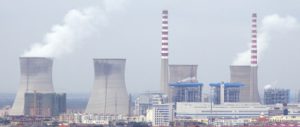Apparent preparations by US energy giant AES Corporation to withdraw from China have raised eyebrows lately. Earlier this year, it emerged that the firm – one of the world’s biggest independent power generators – had engaged an investment bank to sell all or part of its business in China for US$300 million to US$400 million (1.9 billion yuan to 2.5 billion yuan). Then in April, China’s Energy magazine revealed that Yangcheng International Power Company, operator of the last Chinese thermal power plant under AES control, was up for sale.
“AES plans to sell off its Chinese assets as a whole and quit the Chinese market – it’s common industry knowledge,” said Lin Boqiang, director of the Center of China Energy Economics Research at Xiamen University. “Other power companies that arrived at the same time have all gone already – AES fought on for longest, the government should give it a medal.” If AES does go, it will leave France’s EDF as the only foreign power company operating in China, where it focuses on nuclear power.
Even before China joined the World Trade Organisation (WTO) in 2001, its thermal power sector was open to foreign firms. In 1993, AES became the first US power company to land on Chinese shores. At that time, it operated mainly through joint ventures with local or national power companies, building power plants and signing contracts with customers that specified minimum electricity purchases.
Back then, China’s power markets were short of capacity, money and technology and there was a grave lack of investment. Provinces including Shandong, Fujian and Guangdong offered guaranteed sales and prices, and pulled in foreign investors with promised fixed rate returns of up to 15%, even 20%.
Investors flocked in, and by the end of 1998 there were as many as 39 foreign power companies operating in China. According to the State Power Economic Research Institute, foreign-backed plants accounted for 14.5% of total capacity at their peak.
An insider from the China Electricity Council recalled that, while state regulations of the time mandated a period of three years to build a 600 megawatt thermal power plant, many projects were up and running within just 20 months. “One day earlier was one day richer,” the source said.
But by 1998, the flood of foreign investment had caused a significant electricity surplus and government policy shifted from encouragement to restraint.
Following orders from the National Development and Reform Commission (NDRC), China’s top economic planner, local governments started doing away with their policies on guaranteed returns, while generating hours and purchase prices specified in the original joint-venture contracts were no longer guaranteed. As one journalist put it: “China is rolling up the red carpet for foreign power companies.”
“How are you going to get that 15% rate of return? You need to be generating electricity for 5,500 hours a year,” explained the source from the China Electricity Council. “Around the year 2000, in many places the electricity generated was too low to satisfy the original agreements. Some foreign companies went to court, but in the end most got nowhere.”
Wu Chenming was vice president of AES China at the time, and said in an interview: “We hope both our Chinese partners and customers will welcome our investment as they once did, and fulfil existing contracts.” The Chinese government retorted that setting fixed rates of return was unfair and would be unusual in any nation.
Despite the sudden change, AES still believed in the potential of the Chinese market and was confident profits could be made. It opted to cut down on the size of its operations, but to remain in China.
The Yangcheng No. 3 Generator, which fired up in 2001, was the last to be built by AES. As of February 2008, the company had only four thermal power plants in China: Yangcheng, Jiaozuo, Aixi and Wuhu. In that year, it sold off its 70% stake in the Jiaozuo AES Wanfang Power Company.
Even so, a small number of optimistic new entrants came into the market – such as Peak Pacific, formed by US firm Constellation Energy and the World Bank. This company arrived in China in 2002, and by 2004 had built seven thermal power plants, making it one of the five largest foreign power firms in the country. But more voted with their feet and quit the Chinese market. France’s Alstom sold a 40% stake in Guangxi Laibin Power Plant B. American’s Mirant, the world’s third largest energy company, sold its stake in Shandong Guodian and Guangdong Shajiao.
In just four years, from 1998 to 2002, the percentage of foreign investment in fixed assets in the Chinese power sector plummeted from 14.3% to 7.5%.
From 2002, the price of coal rose steadily, but government controls on electricity pricing meant power companies could not pass the extra costs on to customers. In 2004, the cost of coal, which accounts for 50% of total generating costs, leapt from 100 yuan (US$15.8) a tonne at the start of the year to 300 yuan (US$47.4) a tonne in winter – but there was only a single adjustment in the price of electricity, an increase of 0.007 yuan per kilowatt hour in the middle of the year.
In 2004, four of Peak Pacific’s seven plants suffered losses, while the others scraped a profit thanks to being next door to coal mines. The company’s operating income in China dropped 20% year on year. Chief executive Robert Anderson said shareholders started asking “why have other companies left China, but you’re still there?” In the end, Peak Pacific also left.
By 2003, foreign firms were leaving China in droves, selling off their stakes in the power plants they had operated for around a decade. In March 2003, US firm Sithe Energies sold off its 40% stake in Wenzhou Telluride Power Company, and then its stakes in Guangdong Dongguan Huojie Power Plant as well as the Hebei Tangshan Thermal Power Plant and the Puqi Sithe Power Generating Company. In March 2004, American Electric Power sold its 70% stake in Henan Nanyang Pushan Power Plant.
On January 5, 2005, Siemens announced plans to sell a 40% stake in Hebei Hanfeng Power Plant, along with stakes in 16 other power plants. In March, Constellation Energy split off from its Chinese operations.
By 2004, foreign energy companies accounted for just 5% of fixed asset ownership in the sector. The NDRC made a second attempt to link coal and power prices, ruling that “when the price of coal for power generating has risen by 5% or more in the last six months, grid power prices will be adjusted six months later.” But there was a condition: the power companies would have to absorb 30% of the increase. “We’ve never seen anything like it anywhere in the world,” complained Peak Pacific chief executive Anderson.
But not all power companies have been victims of pricing mechanims. For coal, China has a dual system: the market-economy and the planned economy. Only state-owned power plants have access to planned-economy coal, and coal mines struggle to fulfil contracts. Private and foreign companies are left purchasing fuel on the open market.
As foreign firms flee, state-owned power companies have demonstrated their immunity to high costs – thanks to state-controlled contracts which price coal at 17% to 50% below market prices. “If private, local or foreign power companies could do the same as the five big state-owned firms and just offload bad assets and obtain funding, they would do so straight away,” said Lin Boqiang.
Chen Nan is a reporter at Southern Weekend, where this article was first published.
This article is published as part of our Green Growth project, a collaboration between chinadialogue and The Energy Foundation.
Homepage image by Rose Robinson


